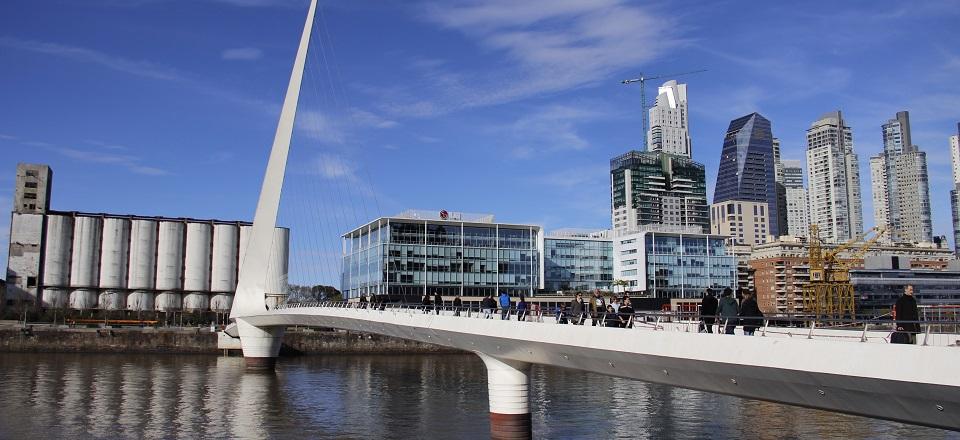Buenos Aires was born to be giant. The city may even be smaller than São Paulo, but it still has a guaranteed place on the list of the 20 largest metropolises in the world: it has 12 million inhabitants. The good news is that the transport system in Buenos Aires is very efficient and cheap. Therefore, although walking is a great option for seeing the most central tourist attractions, you don’t need to worry about eventually needing to use the subway, buses or taxis to get around the capital of Argentina. The good part is that it is not difficult to do this.
But, for those arriving from abroad, understanding the ins and outs of the transport system in a large metropolis can be complicated. To help you with this, we created this guide on how to get around Buenos Aires. For starters, there’s a website you need to visit.
See too:
• In which region should I stay in Buenos Aires?
• See also: a weekend in Buenos Aires
Interactive map of transportation in Buenos Aires
In addition to our well-known Google Maps, the Buenos Aires government maintains an Interactive Map with guidance on using public transport in the city. The advantage is that it is always well updated regarding permanent or temporary changes to the lines. You can access it via the website https://mapa.buenosaires.gob.ar.
The logic is exactly the same as Google Maps – you enter the starting address, the destination and search. The website will give you the best options for getting to the location, whether on foot, by bike (Buenos Aires has 130 kilometers of bike paths), by public transport or by car. If your choice is public transport, the website informs you of the alternatives. If it is a bus, where you should catch it and at what point you should get off. If it’s the metro, what is the correct station and whether you will need to change. Simple, right?
How to catch the bus in Buenos Aires
This is by far the transportation method I used most, precisely because it is the most comprehensive. Buenos Aires has 180 bus lines (here called colectivos), all indicated by a number. Contrary to what happens in Brazil, the buses don’t have changing tables – you pay the ticket with Sube, the public transport card. And attention: Payment can no longer be made in coins. In the past, drivers could accept cash, as long as the fare was paid in coins, which made things a little more complicated, as they are a much rarer item than banknotes.
However, this has changed recently, and now to use the Buenos Aires transport system it is mandatory to purchase a Sube card, a type of Bilhete Único, to name a similar item used on public transport in São Paulo. We’ll talk more about Sube below.
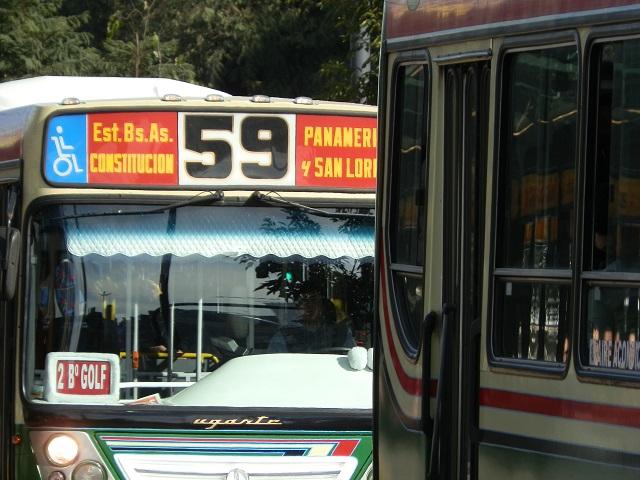
The ticket price varies depending on the size of your trip. Therefore, as soon as you get on the bus you must tell the driver which stop or region you are going to get off at (example: “9 de Júlio”, for those going to the city center). You can also say the value at once (if you already know what it is). Prices are between 16.50 and 18 pesos.
Buses run 24 hours a day, but the frequency is much lower during the early hours.
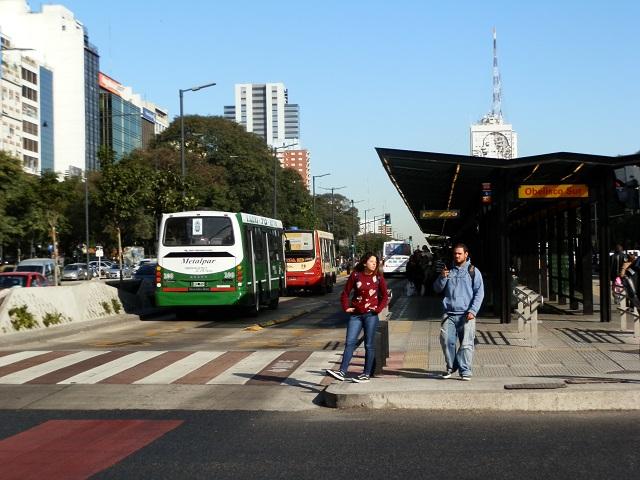
How to use the Buenos Aires metro
In Buenos Aires the subway is called subte, an abbreviation of the word underground. There are six lines, with Line A being the oldest in the Southern Hemisphere: it was opened in 1913. At the entrance to the stations there is information on which line passes through each of them. Pay attention to the signs, as there are places only for passengers to leave and others only for entry.
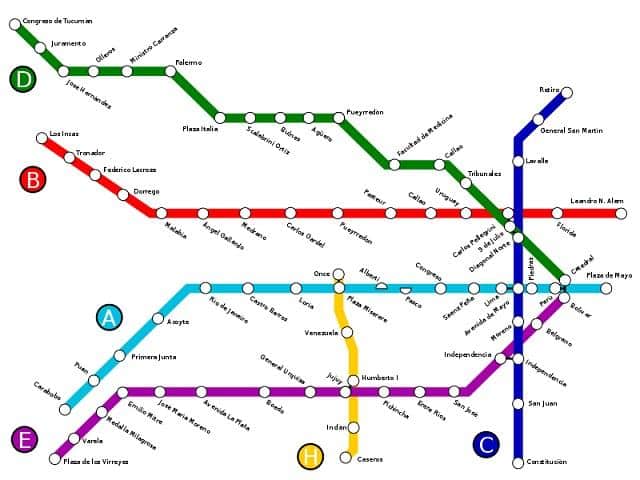
Although it is the fastest and most practical means of transport in Buenos Aires, the metro closes early: it runs from 5am to 10:30pm (Monday to Saturday). On Sundays and holidays the subway opens between 8am and 10pm. Some stations have even shorter opening hours. When getting off the subway, pay attention to the signs about this – it may be that this station closes half an hour early, for example.
Just like getting around by bus, the easiest way to find out which line to take is through the Mapa Interactivo website. The Sube card is also mandatory if you want to use the system, and you can buy it and top it up at the station itself, which makes life easier.
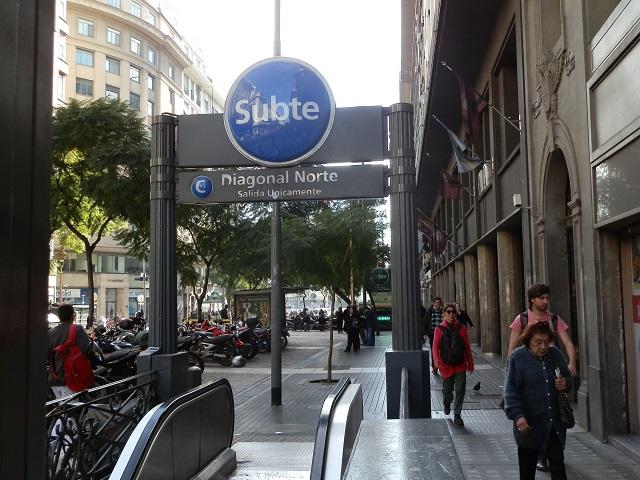
The Sube card
Sube – an acronym that stands for Single Electronic Bill System – can be purchased in several stores and kiosks from Buenos Aires. There are more than 4 thousand accredited sales outlets, and you can see the list of accredited locations here. Normally, the card can be charged at the same points of sale or on the subway (in this case, a charging receipt is not issued and you are advised to check whether the balance has “dropped” on the card before continuing your journey).
Sube can be used as many times as you want when traveling within the Buenos Aires metropolitan region. In other words, it is not necessary to do one per person, but only one per group. If you are in Buenos Aires for a few days (like a weekend), having a Sube is not essential, as you can avoid using public transport, but those who stay longer will need it, especially to avoid the need for take taxis all the time.
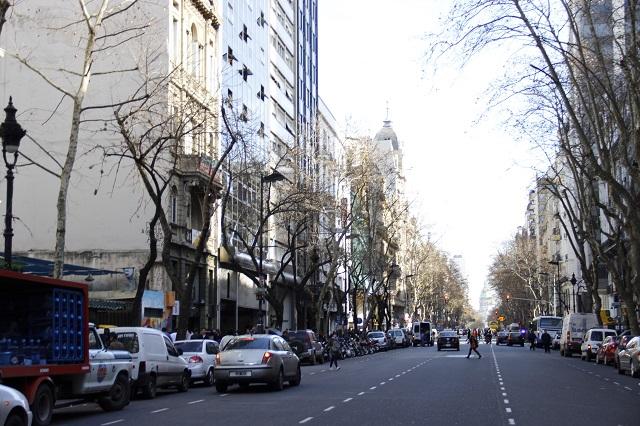
Taxis
There is almost terrorism involving taxis in Buenos Aires. Before coming here, I read about countless scams that naughty taxi drivers would pull on innocent tourists. A month and countless taxis later, I only found good, honest taxi drivers. Mind you: this doesn’t mean that scams don’t exist, just that you don’t need to be afraid of taking a taxi. If the race is short, avoid paying with high bills. If you have to do this, tell the driver in advance, not only to avoid the famous fake note scam (in which the taxi driver exchanges his real note for a fake one and then refuses to receive it), but because the taxi driver can often not having change if the race is fast.
Furthermore, keep in mind that taxis are still very cheap in Buenos Aires. A ride from Palermo to our hotel, in the center, during the early hours of the morning, usually costs around R$15.
A fancier taxi option is the Remis, a type of rental car with a driver. This is an option often used by those leaving the airport. For more details, see our post on the subject.
Other ways to get around Buenos Aires
You will use river transport if you want to leave Buenos Aires and head towards Uruguay. Companies such as Buquebus and Colonia Express (cheaper) connect Colonia del Sacramento, Montevideo and the capital of Argentina. Additionally, you can take the train to leave Buenos Aires, if you want to take a day trip to Tigre.
Travel insurance for Argentina
Taking out travel insurance is essential, even for countries as close as Argentina and Uruguay. No matter how close it is to home, it is best to travel protected so as not to suffer from unforeseen events.
The good news is that it is possible to take out good travel insurance for around 10 reais per day. To do this, we recommend using a search engine like Seguros Promo, which compares the main insurance companies and ensures that you find the best value for money, according to your needs.
Furthermore, blog readers are entitled to an exclusive discount coupon: 360MERIDIANOS05. See some of the offers below and choose yours:
Where to stay in Buenos Aires
The main neighborhoods to stay in Buenos Aires are:
- center
- San Telmo
- Recoleta
- Palermo
The first two are for those who want to save money, stay close to everything and don’t mind clutter. Recoleta and Palermo have more expensive accommodation, but they are more upscale and beautiful neighborhoods. You can find out more about the regions in our post Where to stay in Buenos Aires.
Recommended accommodations in Buenos Aires:
Find hotels in Buenos Aires
Sign up for our newsletter

Sign up for our newsletter and stay up to date with exclusive news
that can transform your routine!

